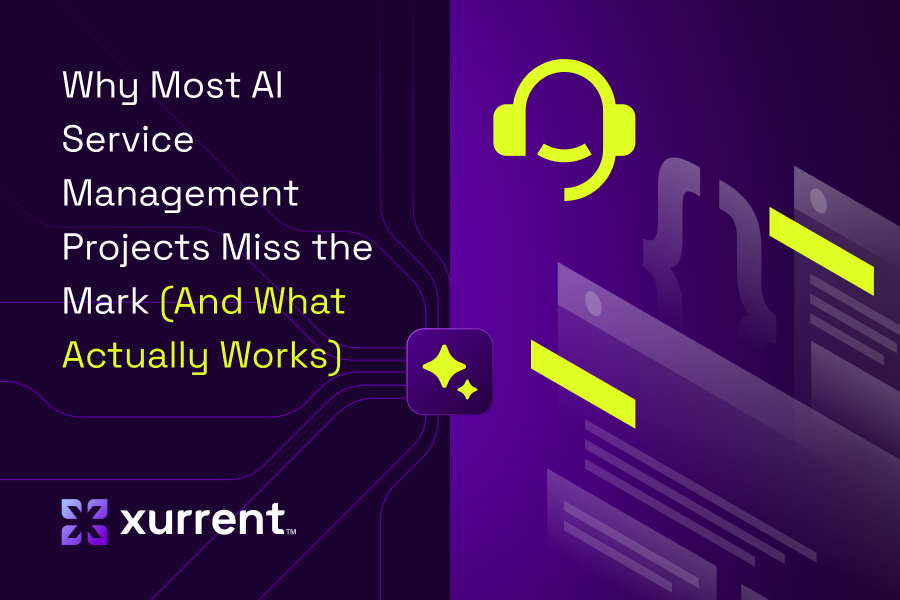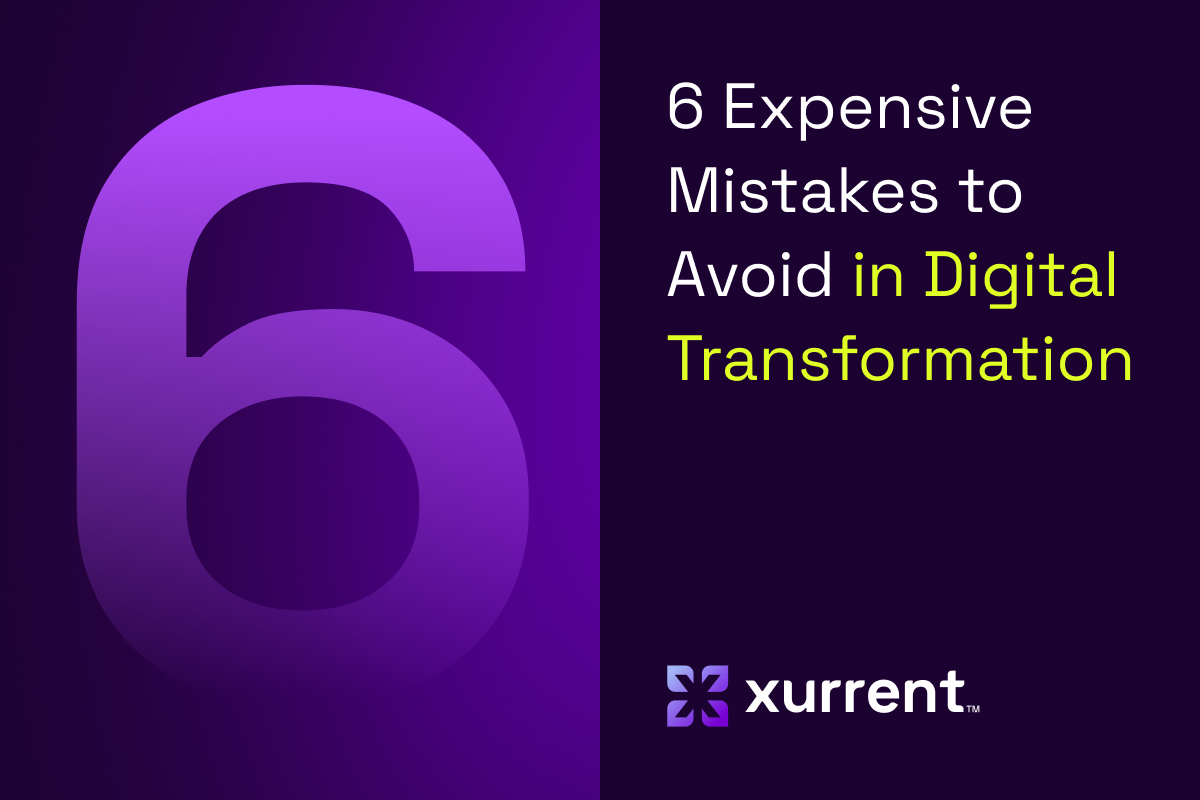From silos to synergy: The rise of ESM as a business unifier
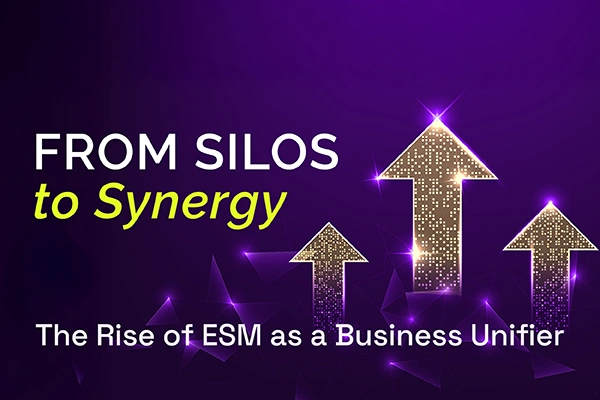
You know, the tall, agricultural grain storage structures that stand alone and don't connect to each other.
But I'm not talking about those silos, obviously.
I mean the silos that exist within an organization, where departments, teams, and divisions operate in isolation from one another. These groups operate independently, with limited communication, sharing of information, or collaboration with other parts of the company.
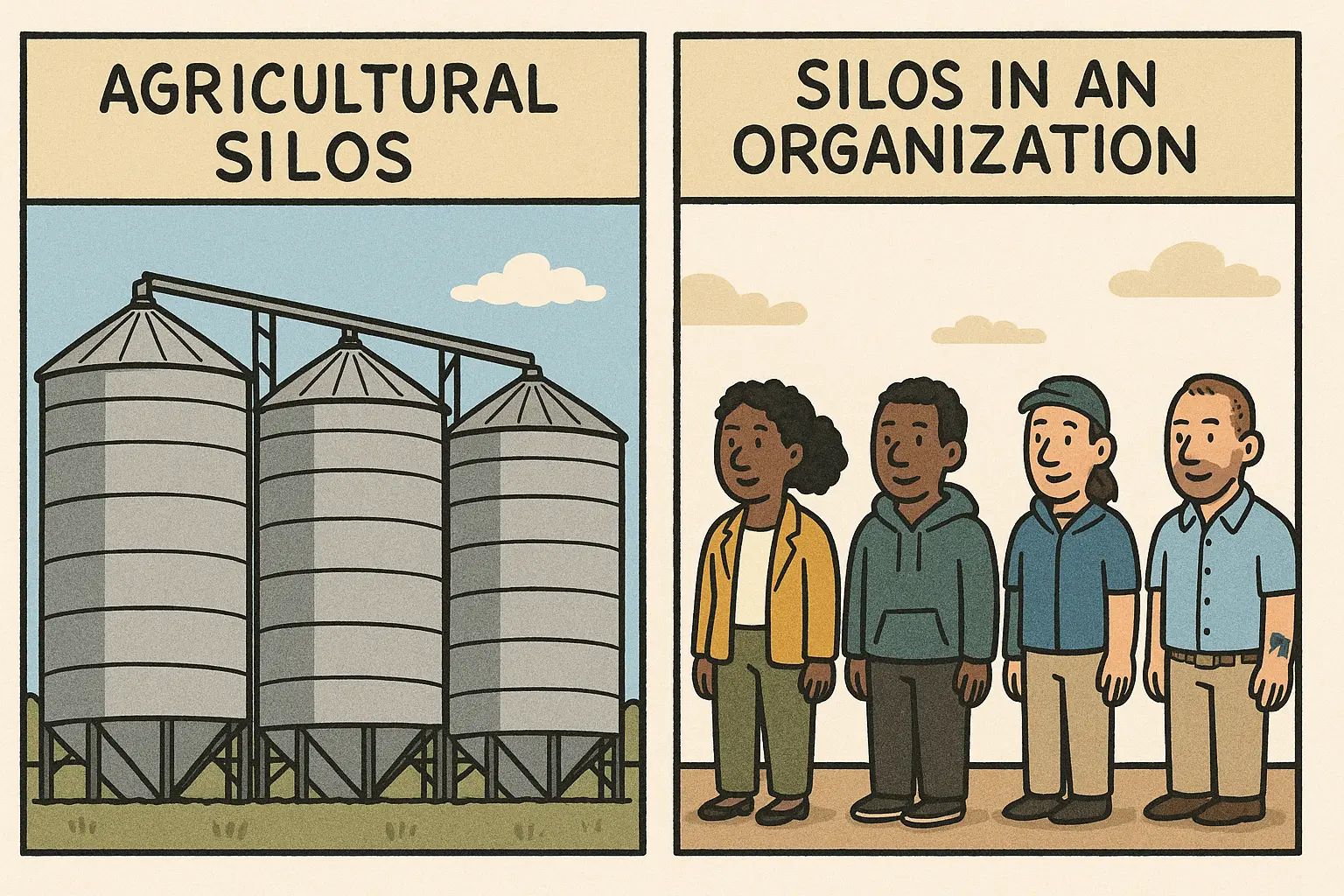
As we all know, silos create barriers where each department focuses primarily on its own goals, processes, and metrics rather than considering how its work affects or connects with other areas of the business. This isolation often leads to inefficiencies, duplicated work, conflicting priorities, and a fragmented customer experience.
Not good.
The time is long overdue to move from silos to synergy. How? Through the great business unifier of Enterprise Service Management (ESM).
This article will break down why and how organizations are embracing ESM to standardize service delivery across departments and smash operational silos.
The silo problem
Same bug fixed by three different teams.
Data scattered, broken dreams.
Hours wasted, work redone.
While the clock ticks, nothing's won.
That's the reality of operational silos, in poem form.
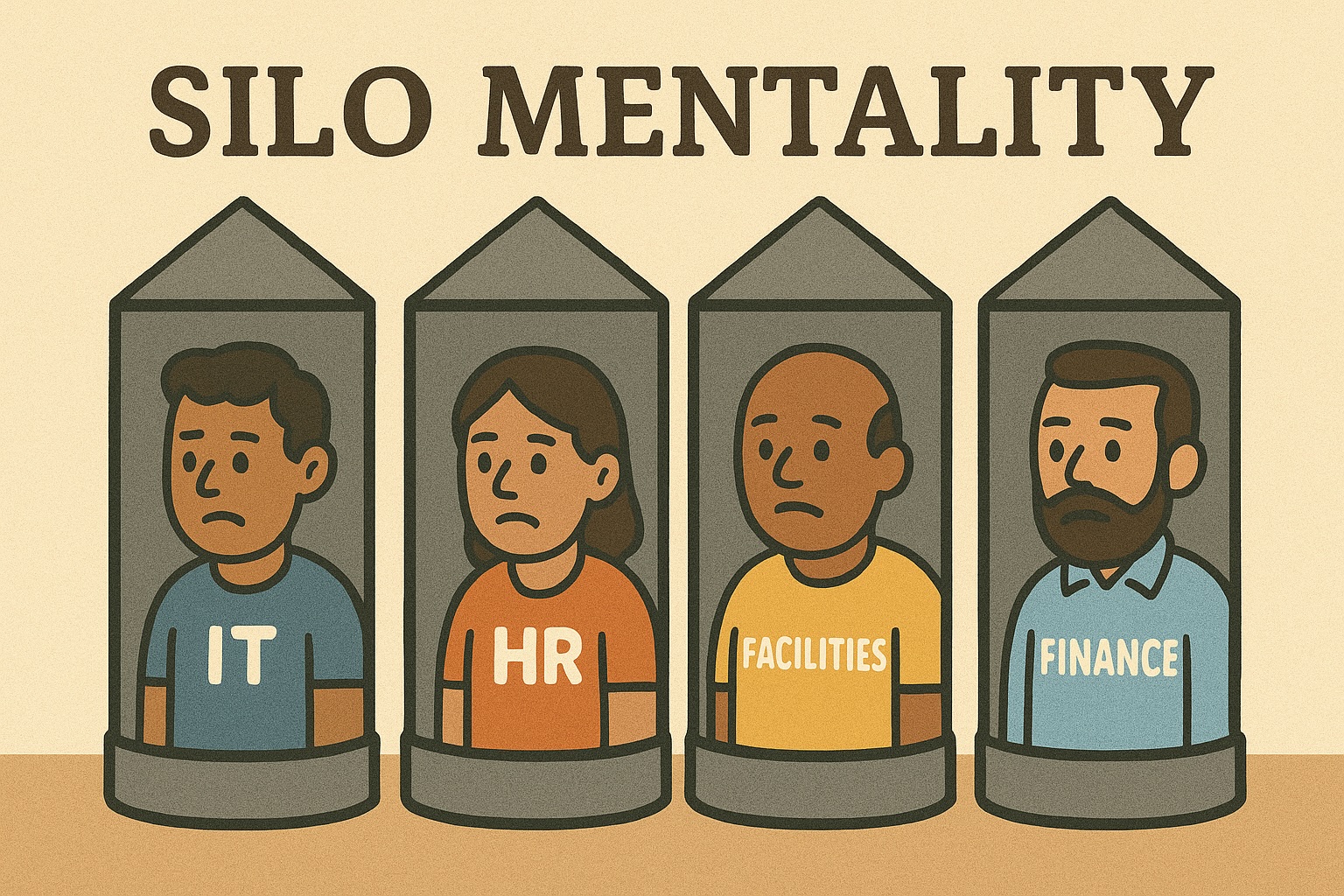
But silos are more than just inefficiency.
Silos lead to ...
🔄 👥 Duplicated efforts where multiple departments solve the same problems in isolation.
📞💥 Communication breakdowns when the "telephone game" (now Slack, messages, email, in-app communication, etc.) affects all departments.
⚖️❌ An inconsistent experience where end users face different service quality depending on which department they're dealing with.
🗑️💸 Wasted resources as each silo maintains its own tools, processes, and support structures.
🧩💥 Data fragmentation, which results in critical insights being lost due to departmental boundaries.
Luckily, it doesn't have to be this way! All of the above is fixable.
What is Enterprise Service Management (ESM), and why its the answer
IT Service Management (ITSM) refers to the entirety of activities —directed by policies, organized and structured in processes and supporting procedures — that are performed by an organization to design, plan, deliver, operate, and control information technology (IT) services offered to customers.
IT has become really really good at process over the past 4-5 decades, thanks to the strict following of process frameworks like ITIL. The software embodiment of this is ITSM. This expertise can be extended to the rest of the enterprise, utilizing the same software, slightly modified for other organizations … with ESM.
ESM extends the principles and practices of ITSM beyond the IT department to other areas of the organization. It aims to improve service delivery across the entire enterprise by applying a service-oriented approach to various business functions.
ESM is not about forcing everyone to use the same tool. Instead, its focus is to create consistent, high-quality service experiences through cross-functional collaboration without losing departmental expertise.
This translates to a single platform — one that unifies processes and includes seamless handoffs from person to person, team to team, and department to department.
ESM is the missing link to unify your organization.
Smart leaders are prioritizing ESM for the following four reasons:
1. The employee experience revolution
Today's worker expects consumer-grade experiences — seamless, intuitive, and immediate service experiences that employees encounter in their personal lives with companies like Amazon, Apple, Uber, or Netflix. They now demand this level of service in their workplace interactions.
Self-service portals that are as intuitive as ordering from Amazon. Real-time status updates on their requests (like tracking a package). Mobile-friendly interfaces that work as smoothly as their favorite apps. Personalized experiences based on their role and history. Instant access to information and services without complex approval chains. Consistent quality regardless of which department they're interacting with
Employees can book lodging, order groceries for dinner, and pay bills — all from their phone, with zero training. They expect their workplace tools to be equally intuitive and responsive.
Take this example: A marketing manager needs to request a new laptop, update her office access card, and request access to the CRM system. In a siloed organization, she'd navigate three different systems with three different interfaces, create three separate tickets, and receive updates through different channels. With ESM, she makes all three requests through one intuitive portal, receives unified status updates, and can track everything from her mobile device — just like managing her personal Amazon orders.
2. Operational efficiency gains
When departments operate in isolation, organizations often pay for the same capabilities again and again (and again). Not the case with a well-implemented ESM platform.
Shared resources and knowledge across departments ✅
Elimination of redundant processes and tools ✅
Faster resolution through cross-departmental visibility ✅
Take this example of a simple employee onboarding scenario.
In siloed organizations, this might involve ... HR creating an employee record → IT provisions various accounts → (maybe even waiting for HR to be done) → Facilities assigning a workspace (after IT is done). This could take over a week to complete.
With ESM, the experience is quite different: A single request triggers parallel workflows across all departments. Real-time visibility enables proactive coordination. Automated dependencies ensure nothing falls through cracks. Oh, and the entire process takes a matter of days, not weeks.
Zen.
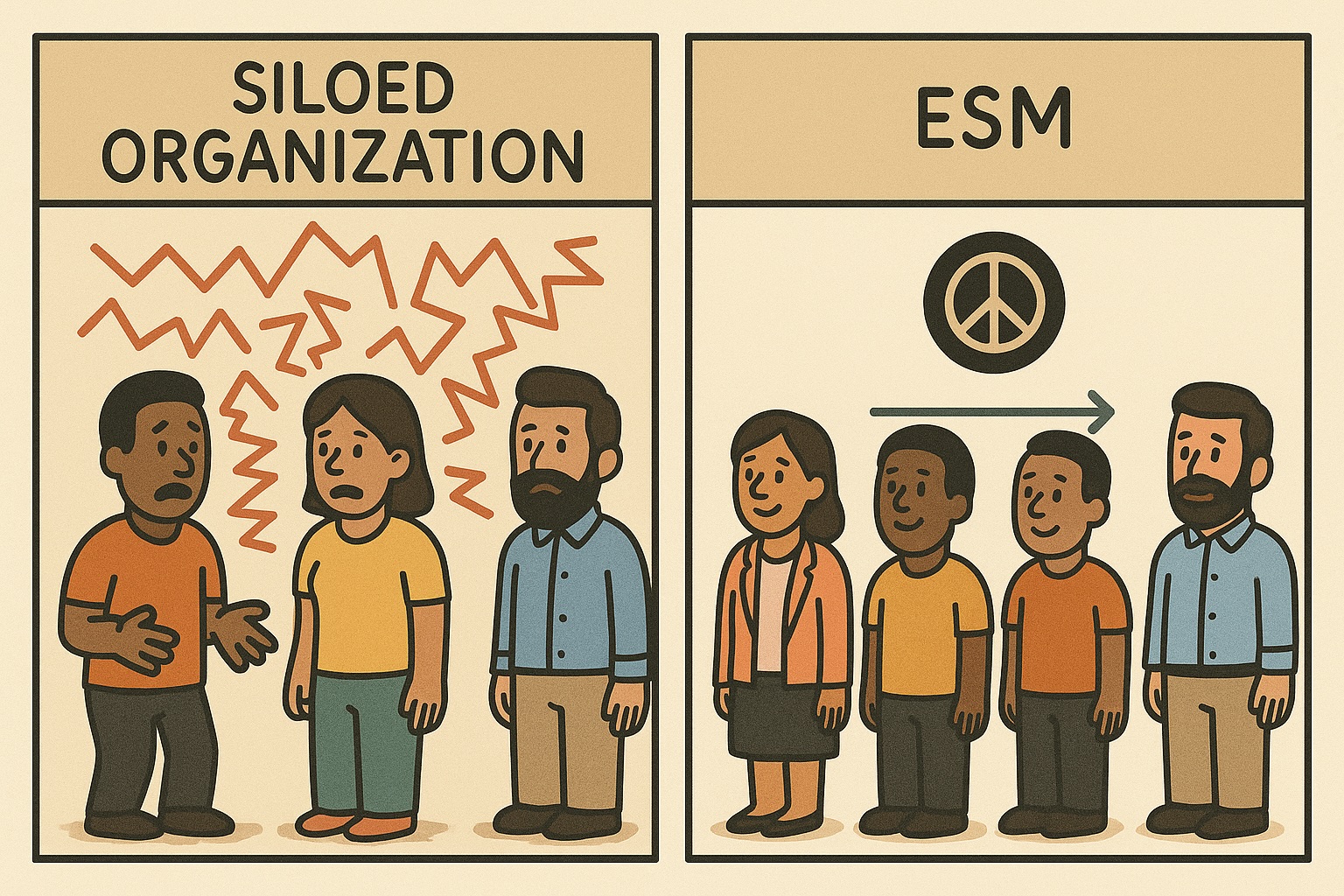
3. Data-driven decision making
When service data lives in departmental silos, organizations are often stuck trying to make critical decisions with incomplete information. ESM changes the entire decision-making equation by providing clear visibility into how your organization actually functions.
As the single source of truth, an ESM platform unites reporting across all service functions, providing a holistic view of the entire organization's service performance — employee journey mapping, peak load management, customer impact assessment, compliance and audit readiness, and more.
Take this (fictional, yet very likely true) example: A manufacturing company used their ESM platform to uncover what action(s) were correlated with the highest employee turnover. The answer: delayed IT provisioning during onboarding, a pattern invisible when HR and IT operated separate systems.
By identifying this connection, they:
- Reduce time-to-productivity for new hires
- Decrease 90-day turnover
- Save significant time and money in recruitment and training
- Improve employee satisfaction scores across all departments
Data-driven decision making empowers teams to more accurately anticipate problems, better optimize resources, and quickly adapt to changes.
4. Scalability and growth readiness
Growth is good, usually. But if your organization can't handle the growth due to operational challenges, you may be in trouble.
ESM helps remove those process inefficiencies.
How?
- Cloud-native ESM platforms (like Xurrent) automatically scale computing resources during peak periods without requiring IT intervention or capacity planning meetings across multiple departmental systems.
- Instead of coordinating user access across multiple departmental systems, new employees get comprehensive access through single provisioning workflows.
- Multi-tenant SaaS architecture (again, like Xurrent) ensures that your service delivery remains uninterrupted during periods of organizational busy periods.
Take this (again, fictional) example: A tech services company grew from 800 to 3,200 employees through five acquisitions over 18 months.
With an ESM platform, each acquired company was fully operational within 3-4 weeks instead of 3-6 months. Employee satisfaction scores remained stable across all locations and teams throughout the rapid expansion. Per-employee service delivery costs decreased despite quadrupling in size. Cross-company collaboration began immediately through shared service workflows rather than taking months to develop.
Breaking down implementation barriers
The path from silos to synergy isn't without potential roadblocks, mostly in the form of employee concerns. Here are a few we hear most often (and how to address them):
"We'll lose our team identity!" If implemented effectively, ESM enhances team capabilities rather than replacing them. Your HR team doesn't become less strategic, and your IT team doesn't lose technical expertise due to ESM. Instead, they gain the ability to collaborate seamlessly while maintaining their specialized focus areas.
"Implementation will be disruptive." It can be, for sure. However, modern ESM platforms, such as Xurrent, enable rapid deployment and full implementation in as little as four weeks, compared to the months-long implementations typical of legacy solutions.
"Training and adoption will be challenging." Unified platforms reduce training burden. Instead of employees learning multiple departmental interfaces and processes, they master one intuitive system that works consistently across all service interactions.
Are you ready for a modern ESM?
A modern enterprise requires modern service desk support, and ESM extends this concept organization-wide through several key capabilities:
💰Flexible licensing model and multi-tenant SaaS architecture that delivers a low total cost of ownership (TCO) while maximizing service efficiency.
⚙️ Low-code and AI-built (not bolted on) tools to automate and customize on your terms.
🧩 Integration capabilities to connect existing departmental tools rather than forcing wholesale replacement.
🔒 Built-in Trust System to ensure secure cross-organizational collaboration in minutes.
Every second your organization operates in silos costs you time, money, and disgruntled employees and customers.
Change that now. Get started with Xurrent today.
FAQs
1. What are organizational silos, and why are they problematic?
Organizational silos are departments, teams, and divisions that operate in isolation from one another with limited communication, sharing of information, or collaboration with other parts of the company. These silos create barriers where each department focuses primarily on its own goals, processes, and metrics rather than considering how its work affects or connects with other areas of the business. This isolation leads to inefficiencies, duplicated work, conflicting priorities, and a fragmented customer experience.
2. What is Enterprise Service Management (ESM) and how does it differ from ITSM?
Enterprise Service Management (ESM) extends the principles and practices of IT Service Management (ITSM) beyond the IT department to other areas of the organization. While ITSM refers to activities performed by an organization to design, plan, deliver, operate, and control information technology services, ESM aims to improve service delivery across the entire enterprise by applying a service-oriented approach to various business functions. ESM creates consistent, high-quality service experiences through cross-functional collaboration without losing departmental expertise.
3. How does ESM improve the employee experience?
ESM addresses today's worker expectations for consumer-grade experiences by providing self-service portals that are as intuitive as ordering from Amazon, real-time status updates on requests, mobile-friendly interfaces, personalized experiences based on role and history, instant access to information without complex approval chains, and consistent quality regardless of which department employees interact with. Instead of navigating multiple systems for different requests, employees can make all requests through one intuitive portal and receive unified status updates.
4. What operational efficiency gains can organizations expect from ESM?
ESM delivers operational efficiency gains through shared resources and knowledge across departments, the elimination of redundant processes and tools, and faster resolution through cross-departmental visibility. For example, in employee onboarding, instead of sequential processes that take over a week (HR creating records, then IT provisioning accounts, then Facilities assigning workspace), ESM enables a single request to trigger parallel workflows across all departments, completing the entire process in days rather than weeks.
5. How does ESM enable better data-driven decision making?
ESM changes the decision-making equation by providing clear visibility into how organizations actually function. As a single source of truth, an ESM platform unites reporting across all service functions, providing a holistic view of the entire organization's service performance, including employee journey mapping, peak load management, customer impact assessment, and compliance and audit readiness. This unified data helps organizations anticipate problems, optimize resources, and quickly adapt to changes.
6. How does ESM support organizational scalability and growth?
ESM helps organizations handle growth by maintaining linear cost scaling, where adding 100 users costs roughly the same per user as adding 10. Cloud-native ESM platforms automatically scale computing resources during peak periods without requiring IT intervention. New employees receive comprehensive access through single provisioning workflows, eliminating the need to coordinate across multiple departmental systems. Multi-tenant SaaS architecture ensures service delivery remains uninterrupted during busy periods.
7. What are the main problems caused by operational silos?
Operational silos lead to duplicated efforts where multiple departments solve the same problems in isolation, communication breakdowns affecting all departments, inconsistent experiences where end users face different service quality depending on which department they're dealing with, wasted resources as each silo maintains its own tools and processes, and data fragmentation which results in critical insights being lost due to departmental boundaries.
8. What are common concerns about ESM implementation and how can they be addressed?
Common concerns include fear of losing team identity, worries about implementation disruption, and challenges with training and adoption. ESM actually enhances team capabilities rather than replacing them - teams maintain their specialized focus areas while gaining seamless collaboration abilities. Modern ESM platforms enable rapid deployment in as little as four weeks, and unified platforms reduce training burden since employees learn one intuitive system instead of multiple departmental interfaces.
9. Why are smart leaders prioritizing ESM adoption?
Smart leaders prioritize ESM for four key reasons: the employee experience revolution, where workers expect consumer-grade workplace interactions, operational efficiency gains through shared resources and eliminated redundancies, data-driven decision making enabled by unified reporting across all service functions, and scalability and growth readiness that allows organizations to handle expansion without operational challenges.
10. What capabilities should organizations look for in a modern ESM platform?
A modern ESM platform should offer flexible licensing models and multi-tenant SaaS architecture for low total cost of ownership, low-code and AI-built tools to automate and customize on your terms, integration capabilities to connect existing departmental tools rather than forcing wholesale replacement, and built-in trust systems to ensure secure cross-organizational collaboration. These capabilities enable organizations to move from silos to synergy while maintaining departmental expertise.
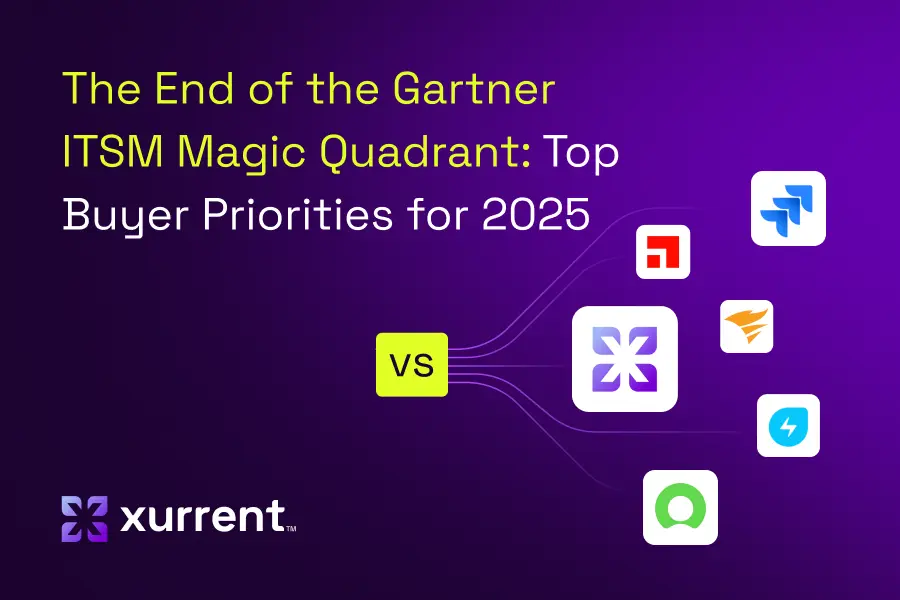

Xurrent named a Market Leader in Research In Action’s Vendor Selection Matrix™ for IT & Enterprise Service Management Solutions
Xurrent earns #1 rankings in customer satisfaction, price vs value, and recommendation index in Research In Action's global ITSM/ESM Vendor Selection Matrix report.


